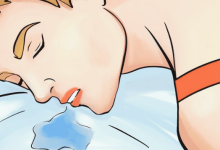What we now know about our relationships with animals will amaze you. Read on to discover some amazing benefits of time spent with animals.
Handling a Pet Produces a Measurable Drop in Cortisol

All of these feel-good interactions are more than just happy talk. A 2019 study found that there’s hard science behind warm-and-fuzzy interventions like the AVPs: in a randomized trial involving 250 students, researchers measured significant drops in students’ salivary cortisol levels after 10-minute hands-on petting of cats and dogs in an AVP. Study group at the local cat café, anyone?
Interacting With Animals Can Make Us Better People

What do other species mean to us (and vice versa)? To get at the heart of the matter, we turned to Kathy Stevens, co-founder of Catskill Animal Sanctuary — a 150-acre refuge in New York’s Hudson Valley where, for the past two decades, thousands of animals have found love and peace after lives full of cruelty and neglect. “Spending time with animals reminds us of our responsibility to right the wrongs our species has created, but also of what’s important — love and connection, regardless of outward differences like class or race or species,” she says. “Animals are teachers and friends, sources of solace and inspiration, and perhaps most importantly, reminders of our moral obligation as caretakers of the planet. That’s how they’ve changed our lives — they keep us grounded in what matters.” Read on to meet some of the Sanctuary’s residents — and to learn just how lucky we are to share the planet with them.
Animals Could Be Therapeutic Aids for Children With Autism

In a pioneering Australian study, researchers measured physiological arousal, an indicator of social anxiety, in trios of 5- to 12-year-old children interacting in classroom-like activities such as reading aloud, reading silently, and engaging in play. In peer interactions where guinea pigs were present (as opposed to peer interactions where toys were present), children with autism spectrum disorder (ASD) displayed reduced arousal and increased positive emotion — which leads researchers to believe that animals could function as “social buffers” in therapeutic settings for them.
Seeing Birds Can Make Us as Happy as Getting a Raise

If you’ve experienced the pandemic-era thrill of discovery at the end of a pair of binoculars, you’re in good company. To learn more about that thrill, scientists from the German Centre for Integrative Biodiversity Research crunched the numbers from a survey of 26,000 people in 26 European countries. They found that a 10 percent increase in species diversity — that is, seeing 14 additional bird species in their vicinity — increased respondents’ life satisfaction at least as much as 10 percent more money in their household accounts each month. If rare birds don’t flock to your neighborhood, don’t despair: English researchers have found that bird abundance (as opposed to variety) is associated with lower levels of negative mental health indicators.
Spending Time on a Farm Can Protect Against Childhood Asthma

Colonizing bacteria known as microbiota “educate” our immune systems in how to respond to the outside world. German scientists analyzed bacteria samples from more than 700 infants who spent part of their earliest months on traditional farms and found that those youngsters had especially mature and effective gut bacteria — gut bacteria that could actually help protect their lungs (and help explain why children who grow up on a farm have a lower risk of developing allergies and asthma).
Visiting Animals Where They Live Is Good for Your Gut

German researchers were especially surprised to discover the positive environmental effects of “farm-related exposures” like time spent in barns and sheds where animals feed and sleep; could a day trip to a local farm sanctuary be in the cards for you and your new arrival this fall? Put another way (in a discussion of a study that found diverse microbes in Amish babies’ systems), “Too clean is not necessarily a good thing.”
Having Pets Early in Life Can Reduce Kids’ Risk of Allergies

The so-called “mini-farm effect,” observed when exposure to a wide variety of microbes and other “immunoregulatory factors” like dog and cat allergens leads to a child’s eventual tolerance of other common allergens (i.e. food and airborne irritants like dust and pollen), has also been reported among children in Sweden. Researchers analyzed data from more than 1,000 young subjects and found that there was a dose-dependent association between having dogs and cats in a household and tolerance to allergic disease — so cohabiting with more cats and dogs reduces risk and increases their beneficial effect.
A Goat’s Gaze Could Cause a Happiness-Hormone Spike

Scientists have known for some time that the “puppy-dog eyes” our canine pals give us can increase our levels of the feel-good cuddle hormone oxytocin, and that the loving looks we give them in return cause their oxytocin levels to increase. (Known as a “positive loop,” it’s heralded as one of the reasons the human-canine bond is so close.) Recent research is demonstrating that goats are also capable of responding to human expressions and our emotional cues, as well as looking to us for help in problem-solving — and study authors speculate that their loving looks might be just as loaded. When it comes to being humankind’s best friend, could goats have had the potential to be the G.O.A.T. all along?
Horses Offer Support for Psychotherapy Patients

As providers of both physical and psychological support for humans, horses have an astounding history: they have been aids in therapeutic treatment since the second century, and there are now 26 different ways interacting with horses can be medically beneficial to people. A systematic review published last year in Environmental Research and Public Health highlighted the emerging and promising science of equine-assisted psychotherapy (EAP) for patients with trauma and personality problems. Research shows that interventions with horses’ assistance could positively influence patient-caregiver trust, offer strong motivation to continue therapy and help patients develop resilience — all crucial aids for groups that tend to drop out of care and have low expectations of treatment.
Interacting With Animals Reduces Stress in Students

As of 2015, more than 1,000 American colleges had animal visitation programs (or AVPs) available to calm the minds of students and administrators alike. AVPs generally last between five and 45 minutes and can range from interactions with therapy dogs or staffers’ pets to extended sessions with adoptable animals from local shelters. Those meet and greets have been associated with everything from higher positive emotions, reduction in negative emotions, lower perceived stress and mood improvements.
Rescuers saved both Scout and Zeke’s lives. Scout (left) has become the benevolent leader of the herd, and is often the first to approach visitors.







